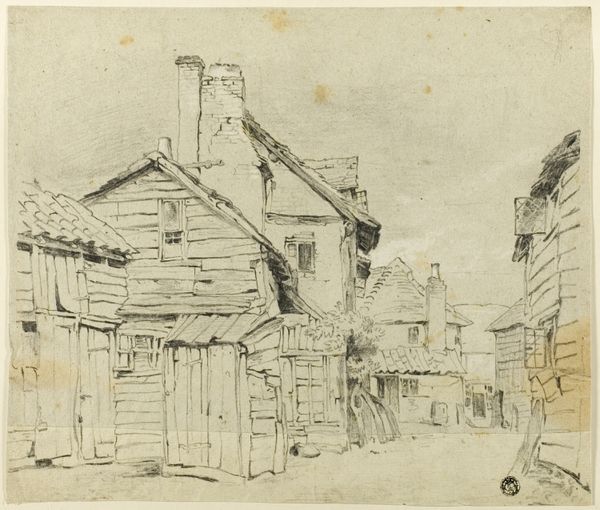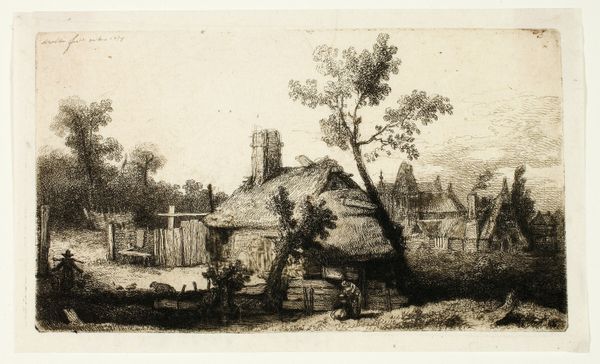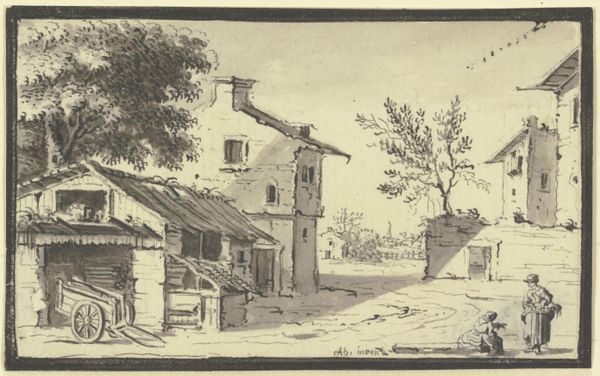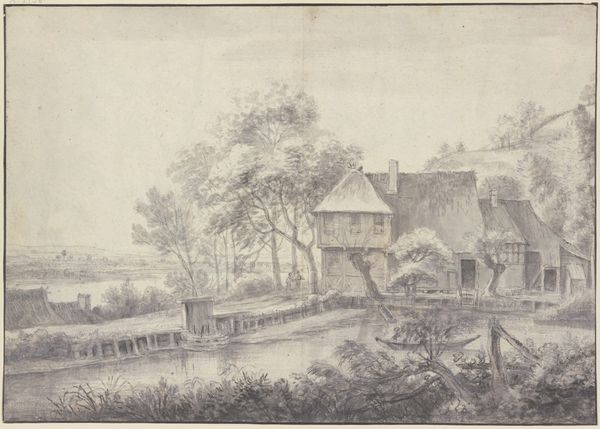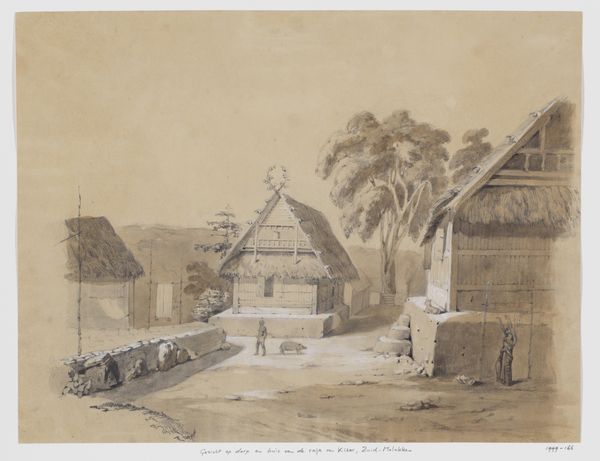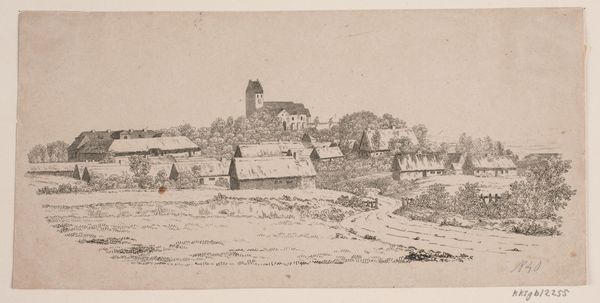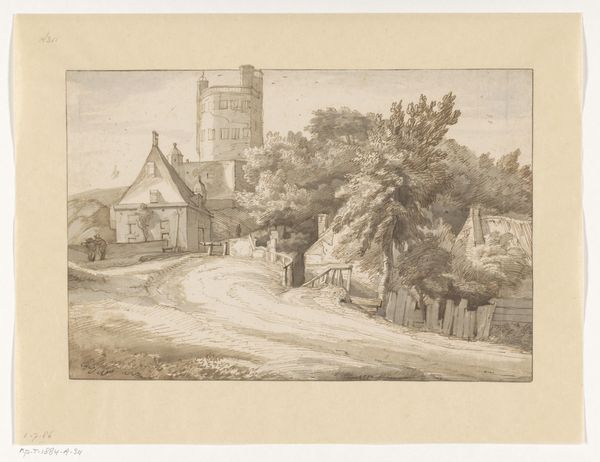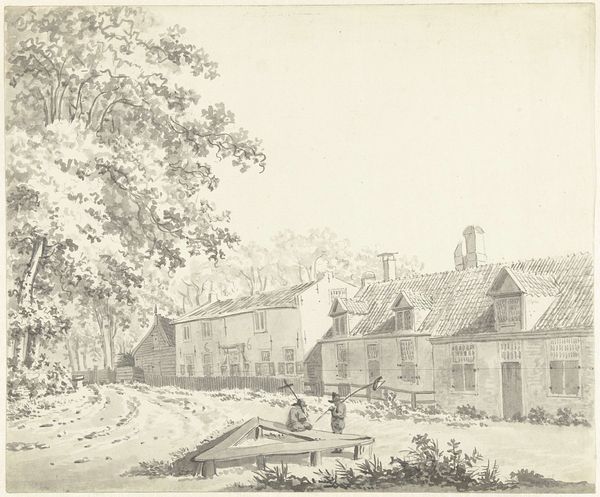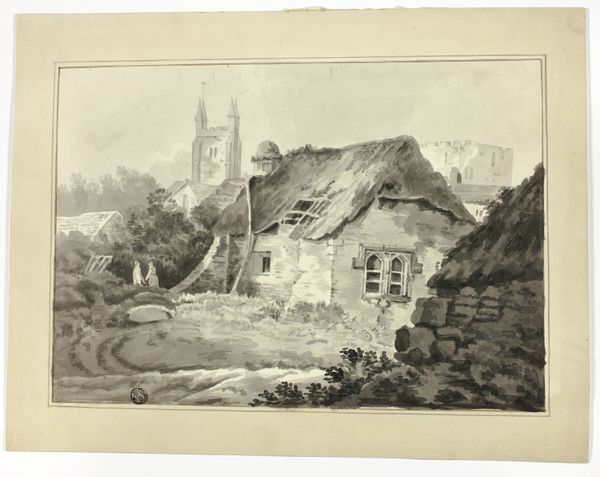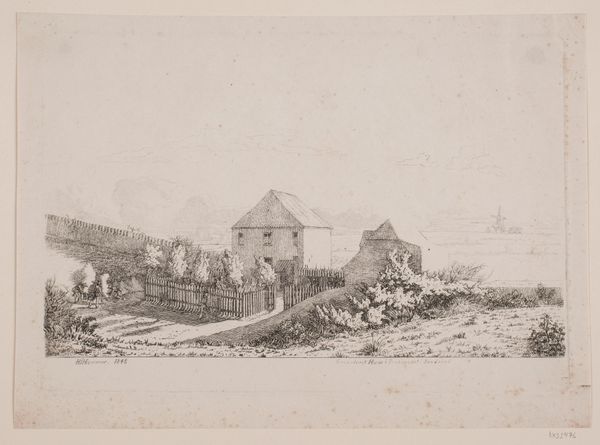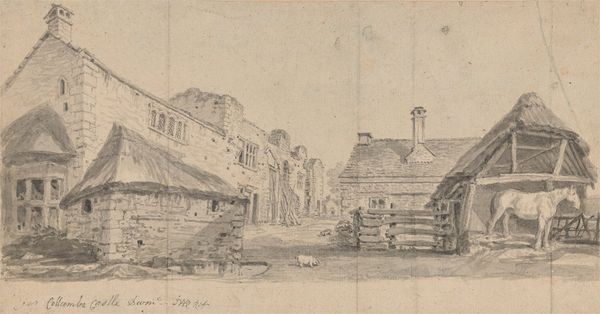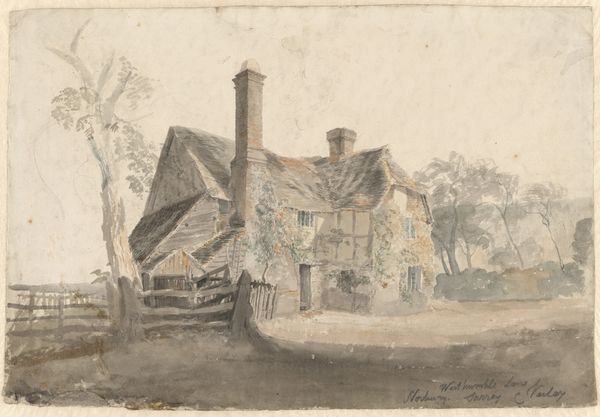
drawing, paper, ink, architecture
#
drawing
#
baroque
#
landscape
#
paper
#
ink
#
architecture
Copyright: Public Domain
Curator: What a delicately rendered landscape! It evokes such a sense of quiet observation. Editor: It feels very lived-in, doesn't it? Immediately I'm struck by the details – the utilitarian sheds, the worn textures, suggesting the lives intertwined with this place. Curator: Indeed. What we have here is “Bollwerk de Rose in Amsterdam,” a drawing rendered in ink on paper attributed to Abraham Furnerius, currently held at the Städel Museum. It certainly exemplifies his meticulous approach. Look at how he defines space and depth with minimal lines, creating such a compelling scene. Editor: Right. And the paper itself, its probable source, would have been produced in windmills nearby. Ink was an equally local trade commodity—nothing about the drawing's material construction could have been divorced from its socio-economic context. Curator: Perhaps, but consider how the composition guides our eye through the architecture—the central building with its stepped gable, the careful balance between the buildings on the left and the hill on the horizon. It adheres to fundamental Baroque principles. Editor: I see how your eye goes there but notice the repetition of angular forms throughout - rooflines echoed in the smaller sheds. Also, observe the visible brushstrokes that trace the material origins, making the artist's hand inescapable. He’s not trying to hide the labor here, but showing its production as labor. Curator: Of course, that visible "labor," as you call it, is what produces the spatial dynamics—a fascinating contrast between the ordered architecture and the untamed, wild quality of the land, the natural forms of trees and hills beyond the structured planes. It speaks to both harmony and the sublime. Editor: I am just left wondering, who were the inhabitants? What was their relationship to the materials that constructed their reality? To what systems of value did their everyday existences subscribe? These elements shape and make art worth analyzing—far beyond the aesthetic, and into what shaped it. Curator: And that to me is a powerful insight. The synthesis of social consideration with the physical manifestation is what adds layers of interpretive dimension here, to be sure. Editor: Precisely. Analyzing this image is as much about considering the economics of labor embedded as appreciating spatial depth. A nice point of synergy in closing I'd say.
Comments
No comments
Be the first to comment and join the conversation on the ultimate creative platform.
